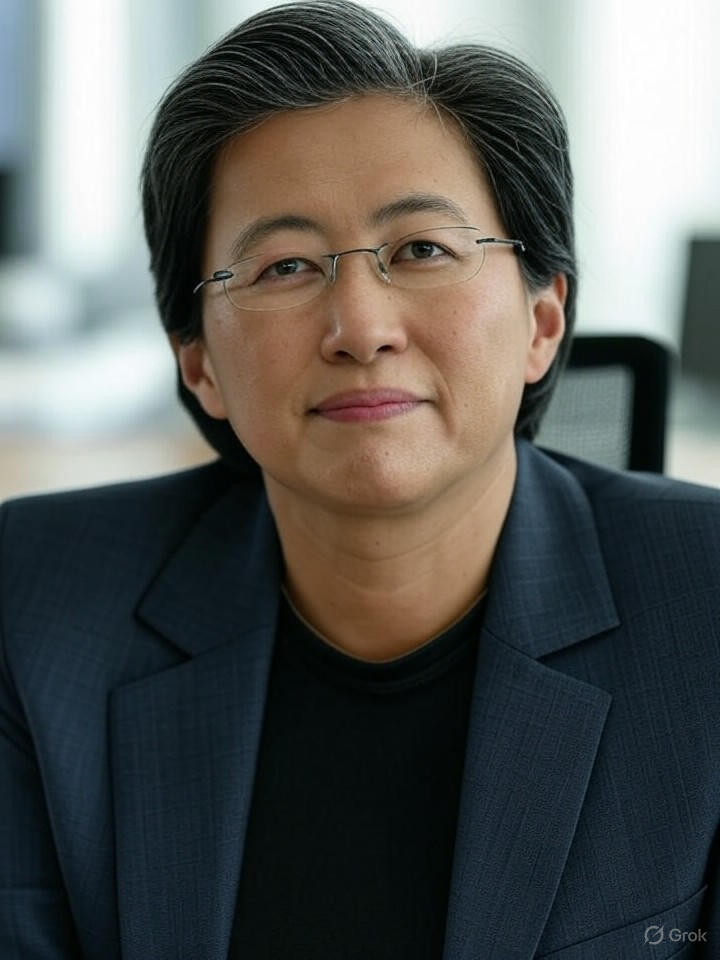Advanced Micro Devices Inc. Chief Executive Lisa Su has issued a bold forecast for the artificial-intelligence chip sector, projecting that demand could surpass $500 billion in the coming years amid explosive growth in data-center infrastructure. Speaking at a recent industry forum, Su highlighted the rapid escalation driven by companies like OpenAI and Elon Musk’s xAI, which are ramping up massive computing needs for training and deploying AI models. This prediction marks a significant upward revision from earlier estimates, underscoring AMD’s aggressive push to challenge Nvidia Corp.’s dominance in the high-stakes AI hardware arena.
Su’s comments, as reported in a Bloomberg article, emphasize not just market size but the urgency for U.S. manufacturing to scale up. She warned that without swift expansion in domestic production capabilities, the country risks falling behind in the global race for AI supremacy. This comes as AMD unveils its MI350 series accelerators, which Su claims offer up to 35 times the performance of prior generations, positioning them as cost-effective alternatives to Nvidia’s offerings.
Escalating Demand and Infrastructure Challenges
The forecast builds on AMD’s recent financial momentum, with its data-center revenue surging 122% to $3.5 billion in the latest quarter, according to a South China Morning Post report. Industry insiders note that this growth is fueled by inferencing demands— the process of running trained AI models in real-world applications— which Su predicts will drive the market beyond $500 billion by 2028. Companies are scrambling to build out data centers at an unprecedented pace, with power consumption and supply-chain constraints emerging as key bottlenecks.
AMD’s strategy involves leveraging open architectures to attract a broader ecosystem, including partnerships with Microsoft Corp. and others. As detailed in a CNBC piece, the company’s MI400 series, revealed alongside OpenAI CEO Sam Altman, promises scalable server racks that could democratize access to high-performance AI computing. This move is seen as a direct shot across Nvidia’s bow, where proprietary ecosystems have long held sway.
Competitive Pressures and Market Dynamics
Yet, challenges abound. Nvidia continues to command the lion’s share of the AI accelerator market, with analysts estimating its annual revenue potential at $400 billion within five years, per a separate CNBC analysis. AMD’s raised sales forecast for its own AI chips—to $5 billion in 2025—reflects optimism, but it pales in comparison to Nvidia’s scale. Su acknowledged this in her remarks, noting that initial skepticism about a $500 billion market has given way to discussions of trillion-dollar possibilities, as covered in BW Businessworld.
For industry veterans, Su’s vision highlights a pivotal shift: AI is no longer just about innovation in algorithms but about raw computational power. AMD’s emphasis on cost efficiency could appeal to cloud providers facing margin pressures, potentially eroding Nvidia’s margins over time. However, regulatory hurdles, including U.S. export controls on advanced chips to China, add layers of complexity, as AMD navigates geopolitical tensions while expanding its footprint.
Implications for U.S. Tech Leadership
Su’s call for rapid U.S. manufacturing scaling resonates amid broader concerns over supply-chain vulnerabilities. Drawing from a Times of India report, she stressed that figures like Musk and Altman are pushing boundaries that demand infrastructure investments on par with national priorities. This could spur policy changes, such as incentives under the CHIPS Act, to bolster domestic fabs.
Looking ahead, AMD’s trajectory under Su—who has transformed the company from an underdog to a $200 billion-plus market cap player—suggests a more competitive field. As the AI boom accelerates, her $500 billion forecast may prove conservative if inferencing applications proliferate in sectors like healthcare and autonomous vehicles. Investors and executives alike will watch closely as AMD’s new chips hit the market, potentially reshaping power dynamics in silicon valleys worldwide.




 WebProNews is an iEntry Publication
WebProNews is an iEntry Publication